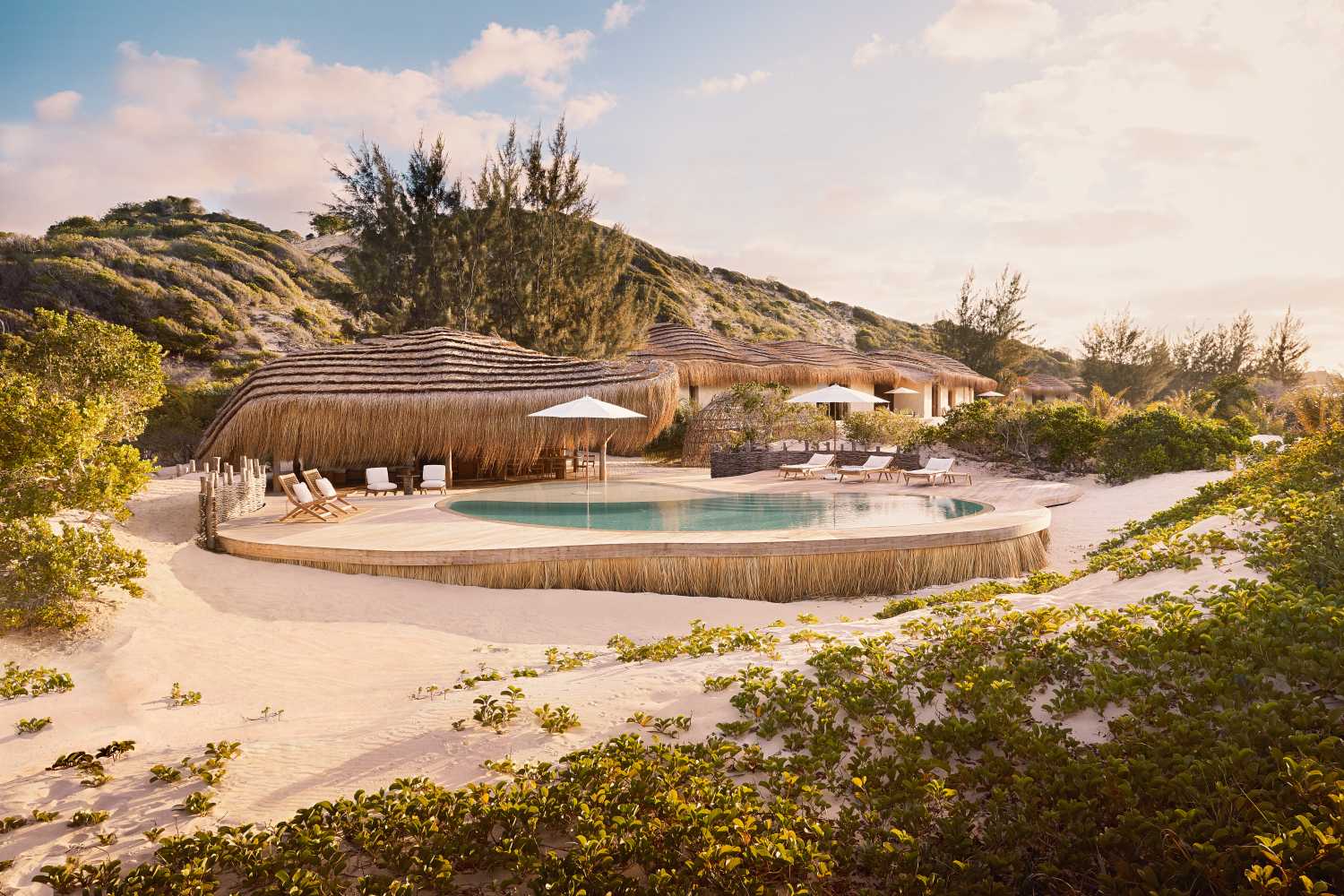
On The Hunt for a Luxe Beach Break? Add Kisawa Sanctuary in Mozambique To Your List
It’s always a good time to start planning your next trip, and with the start of a new season upon us, Mozambique, with its pristine beaches and sweeping plains should be on top of your wish-list this winter
On Mozambique’s Benguerra Island, the suni antelopes don’t have many worries. A big-eyed deer smaller than a beagle and cute enough to have been dreamed up by Disney, these petite faunae vastly outnumber any natural predators, and the locals — made up of just 2,013 islanders — are more concerned with fishing for serra (kingfish) and barracuda in the warm, blue-marbled Indian Ocean then bothering with them. Stay for a few days in this quiet, coastal paradise, and you too may find living the good life comes naturally here.
Set in a protected national marine reserve 14 kilometres from the mainland – a zippy seven minutes by helicopter from the tiny international Vilankulo Airport, Benguerra Island is home to several hotels including a bush-camp style outfit by andBeyond, but at nearly five times the price, the fully independent and dramatically different Kisawa Sanctuary blows the competition out of the water.
I first saw renderings of the eight-key Kisawa Sanctuary around the time it launched in 2021 and have wanted to go to Benguerra Island ever since. It looked African but otherworldly, hemmed in by wild scenery that defies the typical beach break. No coconut palms or rowdy seagulls. Instead, untamed casuarina pine forests and elusive osprey. The location of the property on the island’s southernmost tip is magnificent, sitting on 300 hectares of empty beaches with sand softer than sifted cake flour and rolling, lunar-like dunes embroidered with purple blooms of morning glory.

Then, there’s the man-made aspect: With cathedral proportions and high-design vibes, Kisawa Sanctuary’s eight residences might just be the most spacious and well-designed accommodations I’ve come across, the smallest of which sits on one acre of land and spawls over 541 square metres, which – for visualisation purposes – is nearly the same size as the doubles court at Wimbledon.
Dreamed up by the property’s founder and creative director Nina Flohr, the style of the residences are vaguely Bauhaus with a palette of Nile greens; sunny-flower yellows; and retro, muted tangerines. Particulars were clearly obsessed over: In my residence, a vintage record player spins crackly vinyls sourced from London record shops. Music tastes are marked on pre-arrival preference sheets. I chose “world music,” and awaiting was Ray Charles; the 70s South African anti-apartheid band Juluka; and the soundtrack to the 1965 film Doctor Zhivago.
Other lovely only-in-Kisawa touches include fragrant incense in patinated brass burners that look plucked from far-off souks and dreamy coconut-oil soap, delicately wrapped in wax paper and perfumed with nutmeg and the Ayurvedic herb black myrobalan. A wish granting butler and doorless and electric Moke jeeps – in eye-pleasing sherbet hues.
Without falling back on lazy colonial tropes, Kisawa Sanctuary is also very Mozambique, drawing from the local design vernacular with majeka grass thatch roofs and wood carvings of domestic jambire (panga panga) and simbiri (ironwood) by in-house craftsman Andre Antonio Zivane, born in Vilankulo.

Weaving is an important tradition on the island, and here, the art form can be seen in undulating baskets decorating vast bathrooms and in oversized sliding door panels, delineating the space. Also, the foundations were partially created by a 3D printer, which permanently resides onsite. The result is an Afrotropical modernism dream of biophilic shapes, natural textures, and desert-sunset tones.
The team is local: 90 per cent come from Africa, and many from Benguerra Island’s three villages, Chirringhome, Bavene, and Chizungune. “I was employee number two,” says Benguerra Islander Querino Lucas Huo, or Q for short. “The local people were happy when Kisawa came, and it was the community who brought the name ‘kisawa’ to Nina.”
Meaning “unbreakable” in the local Xitswa language, the word describes the project’s determined, persistent spirit and steadfast ethos of doing things the right way, not the easy way. It also serves as a good description for the hardy and unshakable Nina as an individual. In the project’s early days, she lived on the beach in tents alongside Q and the other first-string hires.

As Guest Experience Manager, Q takes me on a gentle sail on Kisawa’s romantic dhow boat, all elegant curves. Strew with printed pillows and a wind-walloped sail in obsidian black, Q built the dhow during covid, with Flohr’s husband, Prince Philippos of Greece and Denmark. During my and Q’s sunset sail, we’re lucky enough to spot a rare and elusive dugong, cousin of the manatee and inspiration behind the age-old maritime myth of the mermaid. Another reason to feel good about staying at Kisawa Sanctuary is that profits directly support the hotel’s parallel operation, Bazaruto Center for Scientific Studies, Africa’s first permanent ocean observatory, located a short, sandy drive away.
After a few days hiking up the red dunes with charming GM Mathieu; sipping on passion fruit mojitos shaken up by bar-star Dube in the garden; and getting twisted into creative new contortions at the safari-chic spa by the intuitive masseuse Ayu, I start to feel like one of the worry free suni deer. I have little stress. No cares whatsoever. (And if I did, my butler Jay would immediately rectify them.) Kiswasa Sanctuary is the clear front runner for the best hotel in the country, but I would argue, it also might just be the best hotel in the world.
For more information visit kisawasanctuary.com.
Images: Supplied.
From the Harper’s Bazaar Arabia September 2024 issue.
